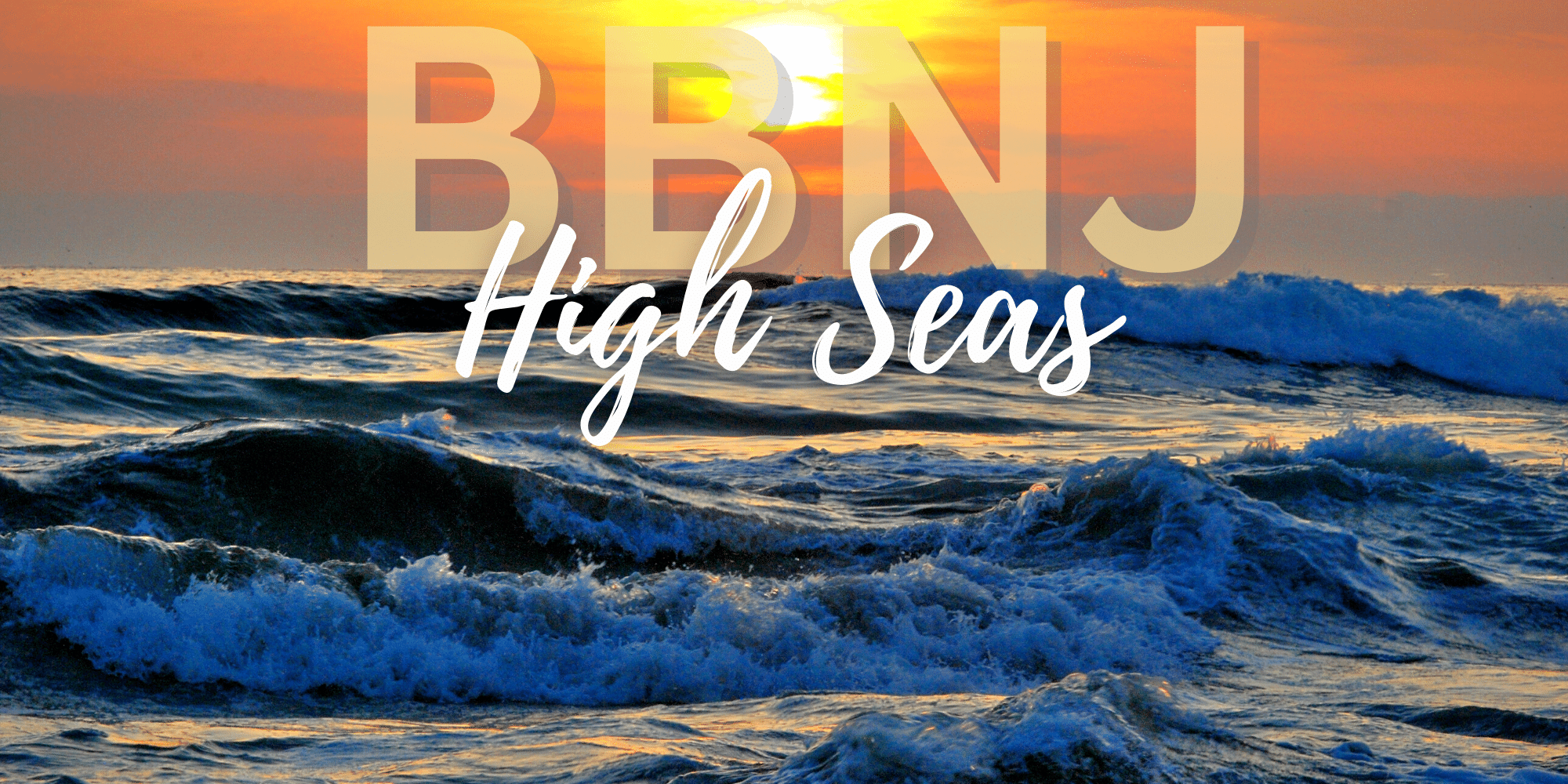After nearly 20 years of negotiations, in March 2023 United Nations (UN) member countries agreed upon an international treaty known as the “Biodiversity Beyond National Jurisdiction (BBNJ)” Agreement to protect oceans of the world that lie outside national borders. The BBNJ is a legally binding instrument under the UN Convention on the Law of the Sea (UNCLOS) and provides a strong overall policy framework for the oceans, which to date have received significant underfunding and have suffered from a siloed approach to ocean management.
Many believe the momentum of the landmark 30x30 pledge to protect biodiversity, signed only months prior as part of COP15 in Montreal, propelled the final push after two decades to realize a much-needed concerted effort to focus on marine resources and potential species loss in the vast habitat of the high seas.
What is the BBNJ Agreement?
The “High Seas Biodiversity Treaty”, also known as the “BBNJ Agreement,” is an international agreement that lays the groundwork for marine protections over previously unregulated waters. Its primary aims are to protect biodiversity by establishing large-scale marine protected areas and regulating marine research for scientific and commercial development. It is anticipated these ambitions can be met by focusing on the conservation and sustainable use of marine biological diversity beyond national jurisdiction. The intended approach includes providing more holistic and equitable management of human activities impacting ocean life to safeguard global ocean health and contribute to climate resilience, increased food security, and economic well-being for millions of people.
The Importance of the High Seas
The ‘High Seas’ refers to marine areas outside the 200-nautical mile limit of the exclusive economic zones (EEZs) of coastal seas, or areas beyond national jurisdiction (ABNJ). These areas represent nearly two-thirds of the world’s ocean, including not only deep seabeds, but also the high seas water column and airspace above, and 95% of the world’s total habitat by volume (much of it unobserved, unmapped, and unexplored).
There are several ecosystem benefits contained and realized in the High Seas – from significant photosynthetic activity of plankton (oxygen machines) -- to the mitigation of climate change effects through the absorption of carbon and storage/distribution of solar radiation (carbon sequestration and heat distribution) around the globe.
As part of a growing Blue Economy, the High Seas is important to not only transportation and energy sectors, but also to seafood production, raw material extraction, and the benefits of marine genetic material. With connectivity to coastal waters, the High Seas supports not only the global and national economies, but also contributes to coastal and shoreline community growth and sustainability as well.
Given the fact ABNJ areas are beyond the limits of individual States’ continental shelves, no one nation has sole responsibility for management and conservation for these areas. This is of vital concern given the fact the high seas host a significant portion of our planet’s biodiversity and fragile ecosystems, and why a cooperative agreement like the BBNJ, and its much-needed governance, is an imperative to halting the current trajectory of biodiversity loss and declining ocean health.
But given the status of the high seas as a global commons — belonging to everyone and no one — and global disparities in terms of resources and vulnerabilities, made working out how to govern these waters a significant challenge
The Importance of the BBNJ
In her September 2022 editorial for Science, High Seas Treaty Within Reach, Kristina M. Gjerdeis, senior high seas adviser of the Ocean Team at the International Union for Conservation of Nature (IUCN) said this of the then BBNJ deliberations:
“These little-known negotiations should compel a sense of urgency because at risk are vital ecosystem services that keep Earth’s climate livable. Existing regional and global organizations for managing fishing, shipping, or deep-sea mining lack a global focus on marine biodiversity that the new treaty could provide.”
The IUCN’s “Red List,” which assesses species for global extinction risk status, suggests nearly 9% of known and evaluated marine species are at risk of extinction. In fact, scientists predict marine extinction risk will climb sharply in the next few years because of rapidly developing infrastructure in the oceans accompanying the explosion of the blue economy, and the increasing effects of climate change. In essence, without radical change, ocean life faces existential threat.
One of the main objectives of the BBNJ Treaty to establish large-scale marine protected areas (MPAs) is a significant step towards the global 30x30 conservation goal. These MPAs are thought to contain two and a half times the total biomass of fish than fished areas, according to a 2018 study published in Nature, and new protections are intended to help limit human activity to allow ocean life to recover.
A research team assembled from the University of California Santa Barbara conducted a study to identify “biodiversity hotspots” in the high seas, publishing a report in 2020 coinciding in timing with treaty deliberations. The study utilized a number of conservation features such as habitat diversities, species richness, and extinction risk, to recommend specific marine regions to prioritize for protection. The team, in fact, presented their interval findings to the UN during negotiations.
These priority areas are identified and described in rich detail as part of a feature in Reuters by journalist Jackie Gu, whose reporting factored also into updates of this published Insights. Her work includes a mapping of what she describes as the “fragmented patchwork of international bodies and treaties manages ocean resources,” referencing a 2016 Pew study identifying 19 governing bodies with a high seas mandate. “Each body has a different scope, and few mechanisms exist to coordinate among them, resulting in a leaky net of regulations where vast swathes of the ocean fall through the gaps,” she notes.
BBNJ Treaty Equity Concerns Remain
There is still a great deal of uncertainty regarding the BBNJ agreement in terms of implementation and action and how key provisions will be honored or even whether they are feasible in the short-term. One pressing question is whether there are roles for both science as well as traditional knowledge of Indigenous peoples and local communities across the globe, and how to equitably share benefits derived from marine genetic resources given the value and potential applications in biomedicine, agriculture, nutrition, aquaculture, and industry, with the potential to generate tremendous economic value.
For example, despite small states with small delegations (often the least resourced developing nations) reporting less access, standing, and influence during negotiations, advocates have described finalizing the treaty a “huge win” for Global South nations.
In writing for Mongabay, journalist Elizabeth Fitt (March 8 2023), notes “Their rights as equal stakeholders to benefit equitably from the high seas under the principle of the common heritage of humankind is now enshrined in Article 5 of the treaty.” This is critically important for nations that want equitable benefit from (and access to) the assets and resources of the high seas but may lack the resources and technology to study and extract resources there.
Issues around funding the treaty were not fully resolved and are thus dependent on the Global North to deliver on pledges, the amounts of which given their status as major polluters were criticized by activists and many smaller nations that are most vulnerable to biodiversity loss.
The treaty outlines a fund to which states will make payments annually on a sliding scale, as well as other monetary benefits from MGRs and contributions from private and state organizations. The hope is that these vehicles will be ground in equity and demonstrate a commitment by wealthier nations to deliver necessary technology, funding, and capacity-building to assist developing nations, such as small island states, to fully participate in the treaty.
Resonance will Monitor the BBNJ Treaty and its Imperatives
For changemakers, catalyst organizations, NGOs, and organizations involved in private sector engagement and cross-sector partnerships, the BBNJ will likely have a profound impact on in not only the High Seas, but also in coastal water activities as well related to reduction of plastics, microplastics, and coastal pollution, climate mitigation and resiliency, resource mapping, biodiversity protection goals, metrics, and monitoring, and sustainable fisheries, among others.
As an implementing firm engaged in many of these undertakings around the globe, Resonance will be reporting on the widespread implications of this treaty, as well as the way it intersects with initiatives under the broader 30x30 pledge, which already have companies and organizations examining ways to mainstream biodiversity into business decisions.
Editor’s Note: This post has been updated for accuracy and current best practices.



